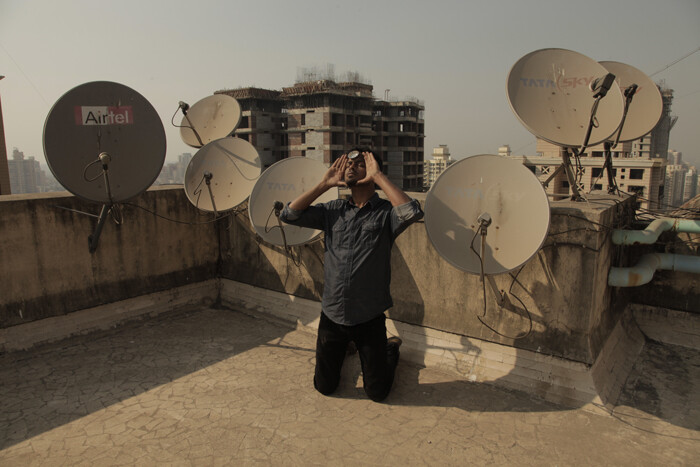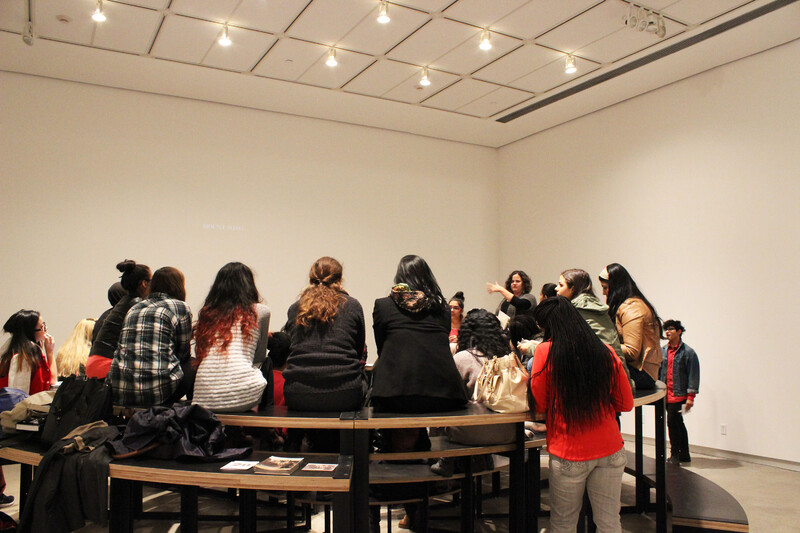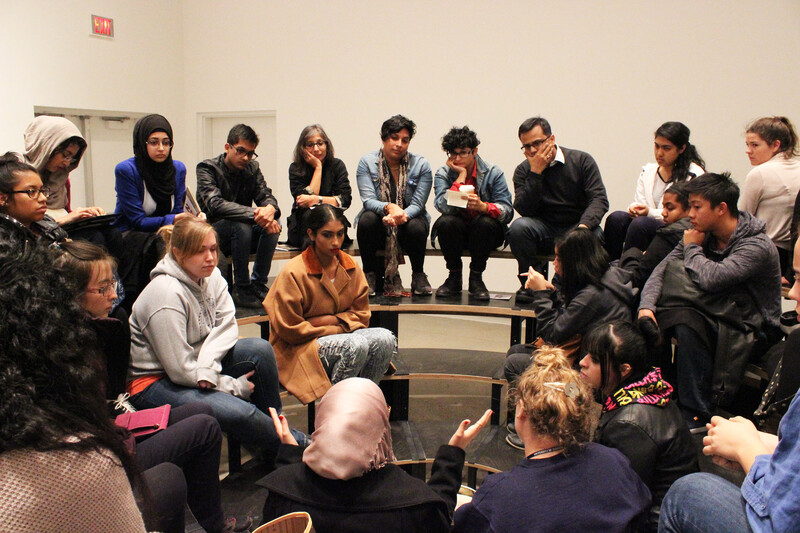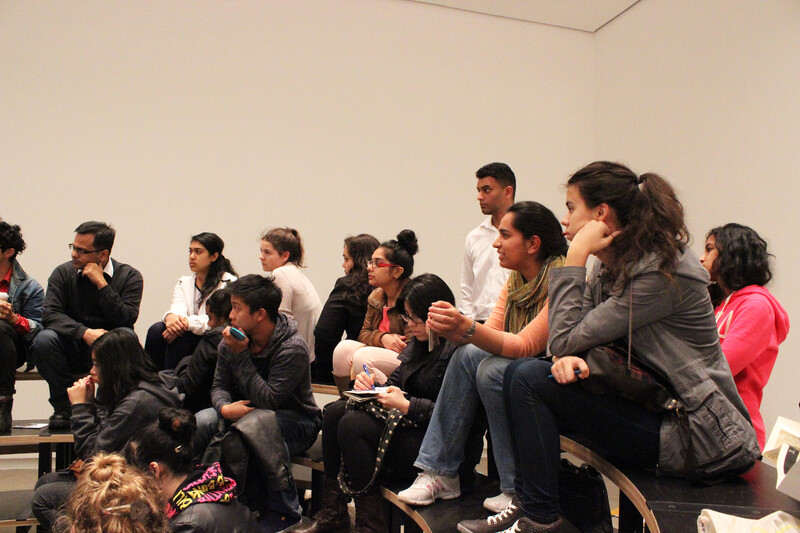
From found footage to performance video, reality television to observational documentary, this set of videos is an investigation into how artists’ moving images perform the political. Join us for a screening and conversation on how cultural agents, with similar socio-political concerns, can create new forms of resistance. Artists include Shambhavi Kaul, Bee Thiam, Anahita Norouzi, The Youngrrr, Priya Sen, and WALA + Kush. For more information, please visit SAVAC’s website.
Monitor 10 is ultimately a celebration of how dramatic narrative within the context of artists’ moving image connects our aesthetic, political and emotional lives, and is derived from radical political, and intellectual positions.
Curatorial Statement: Performing the Political
With the imminent entry of a fascist leader, India is entering one of the country’s darkest and most melodramatic political periods yet. India is often considered the biggest bully in South Asia, and the impact of this election will spill over into the region as a whole. Dictatorships and other threats to democracy are not contexts specific to South Asia, variations of this exact political phenomenon are occurring throughout the world. How can we, as cultural agents, with similar socio-political and aesthetic concerns create new forms of resistance? How can artists’ moving image perform a political role within this crisis of democracy and civil society? Maybe the answer lies in Jean-Luc Godard’s famous proclamation, “It’s not about making political film, but about making films politically”.
When Yvonne Rainer traveled to India in 1971 she was profoundly influenced by the vocabulary of movement, and the use of gesture and dramatic narrative in the Indian dance forms of Kathakali and Bharata Natyam. This was an experience of unique intensity, and a significant moment in the development of her practice. She began to look at whether her “own life contained possibilities of mythology”, and this exploration led to one of her most radical works, Lives of Performers (1972). “Melodrama,” she explains “is the place where behavior and theater meet,” and with this film she investigated the “unalleviated intensity of emotion characteristic of soap opera, where everything is always in crisis or climax.” The theatricality of movement, the issue of emotion in its relation to a politics, and the suggestion of narrativity thus became important features in Rainer’s avant garde cinema.
Through Monitor 10 we engage the politics of drama, with Rainer’s radical artistic practice in mind. From found footage to performance video; reality television to observational documentary, this set of videos is an investigation into how artists’ moving image performs the political.
Smoke creeps through seemingly haunted landscapes. A storm brews, and a parrot squawks from a flowering branch. An atmosphere for melodrama has been set and Shambhavi Kaul’s beautifully unsettling Mount Song begins to unfold. Meticulously constructed with found footage of abandoned sets from Chinese martial arts movies, Mount Song uses the stylistic elements of the science fiction and action genres to problematise cultural representation and the consumption of ‘eastern’ imagery.
Through the drama of Chinese martial arts movies we enter Tan Bee Thiam’s Kopi Julia, a tribute to the Malay horror films of the Cathay & Shaw brothers. Based on a short story by Faizal Sulaiman, Kopi Julia is a mash up of ingredients from silent cinema, television soap opera and German expressionism. The hyper theatricality of the actors with their exaggerated physical expressions, builds towards a climax that is melodramatic, bizarre and outlandishly queer. Kopi Julia offers a radical spin on the genre from which it has been inspired.
While exploring how artists’ moving image challenges genre definitions in multiple ways, Anahita Norouzi’s Tehran, the Apocalypse is another interesting example, as it exists at the intersection of performance and documentary realism. She emphatically refers to the video as a ‘documentation of a performance’ and not a work of video art. Locating herself as a ‘citizen-artist’, Anahita Norouzi performs an act of violence in a public space and creates a moment of extreme tension, as she attempts to challenge gender norms and critique institutionalized forms of political and religious violence in Iran. As the politics of this work is intrinsic to its form, the moment of crisis and the intensity of emotion in the performed violent act, raise critical questions on the role of the artist as both participant and provocateur.
Bringing the performance of politics from a public space into the private space, we encounter Another Colour TV by the Youngrrr, which is framed as both reality television and theatrical drama. The behavior of the ‘actors’ makes a direct comment on the role of television within the everyday dynamics of a family. As the real time situation of viewing is captured, the conflicting value systems of different members of the family become apparent through their response to soap operas, news programmes and commercial entertainment. The mother emerges as the central figure, and the crisis of her lonely domestic reality becomes visible. The melodrama of the everyday unfolds.
This investigation into public-private space is poetically embodied in Priya Sen’s Noon Day Dispensary, a reflection on the dramatic gestures that shape quotidian realities. Filmed at the government run, free dispensary that is open from 8am – 2pm every day in the Savda-Ghevra Resettlement Colony in Delhi, this observational documentary challenges easy narratives around eviction, resettlement and city planning. While highlighting the drama inherent to the struggles of everyday living, Noon Day Dispensary reclaims the style and philosophies of cinema verité, and critiques the context of the developmental activist documentary through its simple, and yet powerful, form.
And finally, We in a one room kitchen field 0.75 by WALA+Kush brings together a cross section of ideas around film form, drama, behaviour, theatre and politics. Intricately layered, this process based collaborative film project has been constructed through interactions, performances, conversations, screenings, shooting, editing and rescreening. Perspectives on development, historical narratives, and issues of waste are discussed on a riverbed of trash, a reclaimed fort and a rooftop of an apartment block. The melodrama of historical narratives and related mythologies unfold through performance poetry, public intervention, musings of the every man and the launch of a new political party.
—Shai Heredia
Film Program
MOUNT SONG
Shambhavi Kaul, India/USA, 2013, 9 min
A foreboding gust courses through the night. It creeps under the door, makes its way into the cracks, revealing, obfuscating or breaking clouds in the sky. Mountain, cave, river, forest and trapdoor; gestures, reiterated, stripped and rendered. A parrot comments from a flowering branch. Here, Kaul’s suggestive set constructions remain lodged in our imaginary.
KOPI JULIA
Bee Thiam, Singapore, 2012, 7 min
Ikram brings home his classmates to feed Julia, his blood sucking step mother. When Julia starts flirting with a classmate Ikram has been secretly admiring, he flies into a rage of jealousy. An adaptation from a short story by Faizal Sulaiman, Kopi Julia is a film tribute to the Malay horror films made in the‘50s in Singapore.
TEHRAN, THE APOCALYPSE
Anahita Norouzi, Iran/Canada, 2012, 5:13 min
Tehran, the Apocalypse is documentation of a performance, in which Nourozi presents herself as “citizen-artist.” Her video is the result of a society in which violence has been imposed, valourized, institutionalized and over-simplified by the political authorities and religious practices of Iran. In this video she questions her role as a reproducer of such violence.
ANOTHER COLOUR TV
The Youngrrr, Indonesia, 2013, 8:37 min
Another Colour TV depicts the economic and cultural conditions of a suburban family in Indonesia, through the escapist tendencies and desires of the matriarch. This split-screen video contrasts Indonesian popular television with the lives of those watching the“colour TV.”
NOON DAY DISPENSARY
Priya Sen, India, 2014, 26 min
Noon Day Dispensary is part of a video series from the Savda-Ghevra Resettlement Colony, Delhi’s newest resettlement colony, started in 2006. These videos-in-making, are meant to disrupt easy narratives around eviction, resettlement and city planning. They are produced spontaneously and attempt to reclaim the style and philosophies of cinema verite as a way to film and be in places. Consequently these videos are also a response to developmental documentaries, and rights based agendas as dominant ways to explain the world and tell stories. This video has been filmed at the government run, free dispensary that is open from 8am – 2pm every day in the colony. This is not an unusual day at the dispensary.
WE IN A ONE ROOM KITCHEN FIELD 0.75
WALA + Kush, India, 2013, 13:48 min
We in a One Room Kitchen Field (W1RKF) 0.75 is a collaborative film project that hosts, produces, co-produces and relays conversations. Developed throughout the nine month Sarai Reader ‘09 exhibition, the project has emerged from the initiators’ engagement with the city through perspectives of history, development, trash, politics and mythology. The resulting version of the film involved shooting/conversing on a river bed of trash in Mankhurd, Mahim Fort, a rooftop of a 28 storey Andheri apartment block, the launch of the Aam Aadmi Party in New Delhi, and the site of Delhi’s announcement as capital on its 101st anniversary.
Monitor 10, Performing the Political
Curated by Shai Heredia
Event Documentation



Kush Badhwar is a filmmaker interested in shifting definitions of traditional mass-media, collaborating with unorthodox actors and using artistic intervention for improvised and informal political engagement.
- Curator
- Shai Heredia



The Blackwood
University of Toronto Mississauga
3359 Mississauga Road
Mississauga, ON L5L 1C6
[email protected]
(905) 828-3789
The galleries are currently closed.
Facebook | Twitter | Instagram
Sign up to receive our newsletter.
The Blackwood is situated on the Territory of the Mississaugas of the Credit, Seneca, and Huron-Wendat.